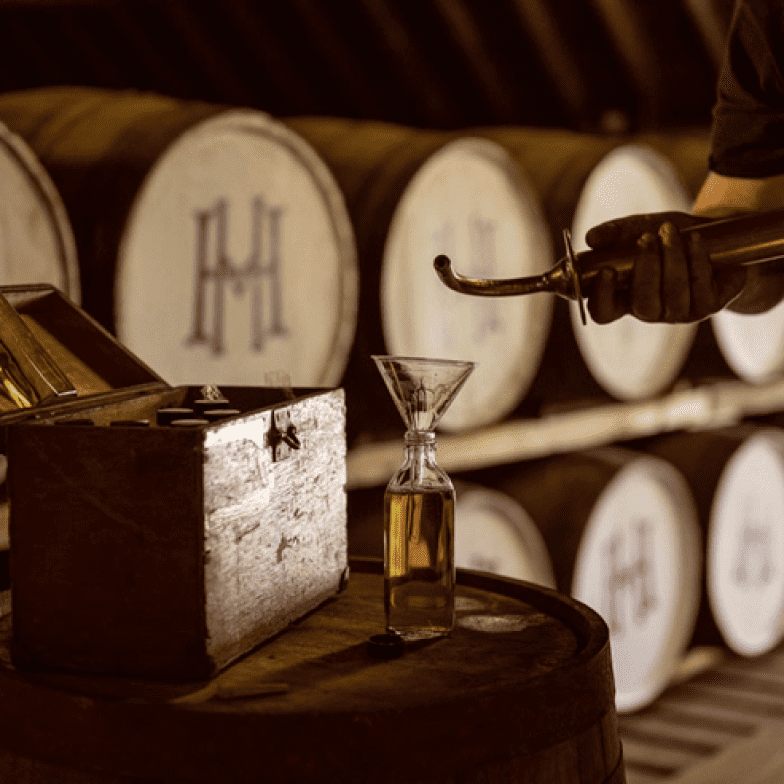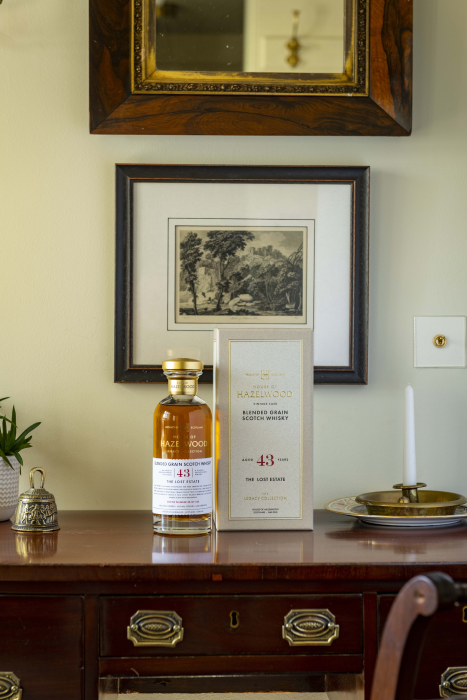
Once-private collection of rare ultra-aged luxury Scotch whiskies arrives in Canada
One of Scotland’s most iconic Scotch whisky distilling dynasties, the Gordon family, has been laying down casks of whisky for personal consumption and enjoyment for more than 100 years.
As the owners of William Grant & Sons Ltd., the Gordons have steadily grown this private reserve over the generations, preserving some of the rarest and most exceptional whiskies for their own private inventory. Today, bottles from this once-private collection are – for the first time – being released in limited numbers to the Canadian market under the name House of Hazelwood.
Jonathan Gibson, director of House of Hazelwood, explains how casks were selected for inclusion in the collection. “In many ways, it is survival of the fittest. The casks are sampled regularly, with increasing frequency as they get older and become more valued … with the principle that as long as it’s improving and as long as it’s the best of its kind, it will get held back.
“Over a 50-, 60- or 70-year timeframe, the vast majority of casks that were first filled have been used for other projects – what remains are the best of the best. They have been preserved for a reason.”
With many of these casks reaching their peak, the Gordon family decided the timing was right to bottle and release some of these rare Scotch whiskies.
Kirsten Grant Meikle, a fifth-generation family member, says they sampled hundreds of whiskies from their personal inventory to curate the House of Hazelwood collection. The release focuses on exceptional whiskies rather than a particular age or style.
“We're not putting together a range based on age. It's based on the story of the whisky – each one,” she says. “We wanted to let the liquid do the talking.”

Each spirit in the collection was chosen for its character, its history or its production method.
The seven products selected for shipment to Canada – for sale through the LCBO – are divided into two collections: the Charles Gordon Collection and the Legacy Collection. “What we're trying to do with each collection is strike a balance of flavours, styles, ages and occasions,” Gibson says.
The Legacy Collection tells the story of Scotch whisky through spirits that are either the first or last of their line or capture a particular moment in the history of the industry.
“The Legacy Collection offers insight into the Scotch whisky industry as a whole,” Gibson says. “I would say most of them have a little X-factor about them that’s not replicated by any other offering on the market.”
Sunshine on Speyside, for example, a 39-year-old Blended Malt Scotch Whisky, stands out for its unique character. “It just was one of those rare whiskies that are simply off-the-chart in terms of flavour profile – an absolute joy to drink and with a character that is both inexplicable and one-of-a-kind,” says Gibson, describing its tropical pineapple and mango notes.
“They’re flavours you don’t often associate with whisky,” Grant Meikle says. “This [Sunshine on Speyside] has been a standout when people sample it because you just watch their faces and they don't really understand it at first, which is quite fun.”
Three other bottles in the Legacy Collection which are shipping to Canada include:
- • The Spirit of Scotland, a 46-year-old double-matured Blended Scotch Whisky, first blended in 1994, to celebrate the 500th anniversary of the first recorded reference to Scotch whisky before receiving a further 28 years of secondary cask aging.
- • The Lost Estate, a 43-year-old Blended Grain Scotch Whisky composed exclusively from whiskies distilled at two traditional grain whisky distilleries that have since shuttered.
- • The Tops, a 33-year-old Speyside Blended Malt Scotch Whisky comprised of “the tops,” or best of the best of the family’s traded malt whiskies aged in custom Spanish sherry butts.

The Lost Estate, a 43-year-old Blended Grain Scotch Whisky.
The Charles Gordon Collection is named after one of the family’s most pioneering members, who brought in some of the earliest stock laid down for the Gordon’s private collection. “The Charles Gordon Collection represents the oldest, most collectible and rarest whiskies within the inventory,” Gibson says.
Blended at Birth, for example, is a 1965 Blended Scotch Whisky that represents a now-obsolete production method. Whisky blending typically occurs after the spirit has reached maturity, but this combination of malt and grain whisky was blended immediately after distillation. The blend was then matured for well over half a century in American oak casks.
“It’s very unusual in terms of its character, with a wonderful almond, marzipan richness,” Gibson says. “Part of that is attributable to the experimental nature of how it was first blended; part of it is due to its long maturation. To have this combination of great age and innovation is incredibly rare.”

"This will probably be the last we see of the style because you simply can't produce Scotch whisky this way anymore.” – Jonathan Gibson
This experimental blending practice never went mainstream and in the decades since the whisky was first distilled, the practice was effectively prohibited by changes to the Scotch Whisky Association’s technical guidelines. “It's effectively a lost style of whisky,” Gibson says. “I think there’s been only one release of a similar style ever brought to market. There has certainly never been anything of this age or quality and the fascinating thing is that this will probably be the last we see of the style because you simply can't produce Scotch whisky this way anymore.”
Two other spirits in the Charles Gordon Collection available in Canada are:
- • The Cask Trials, a 1968 sherry cask matured Scotch Whisky made from an unusual union of European oak and grain whisky sourced from the family’s own Girvan distillery.
- • The Long Marriage, a 56-year-old double-matured Blended Scotch Whisky that has aged in a single refill sherry butt for more than half a century.
“You can get whiskies that are unusual and you can get whiskies that are old, but to get that combination of provenance or character within the whisky and great age is really, really rare,” Gibson says.
House of Hazelwood is now available at the LCBO. Sign up for the House of Hazelwood newsletter to stay up-to-date on more exclusive releases.
Read more: Rare, aged whisky collection embodies the history of iconic Scottish distilling family
Advertising feature produced by Globe Content Studio with House of Hazelwood. The Globe’s editorial department was not involved.